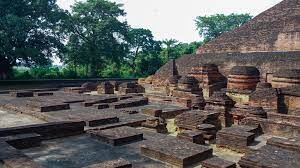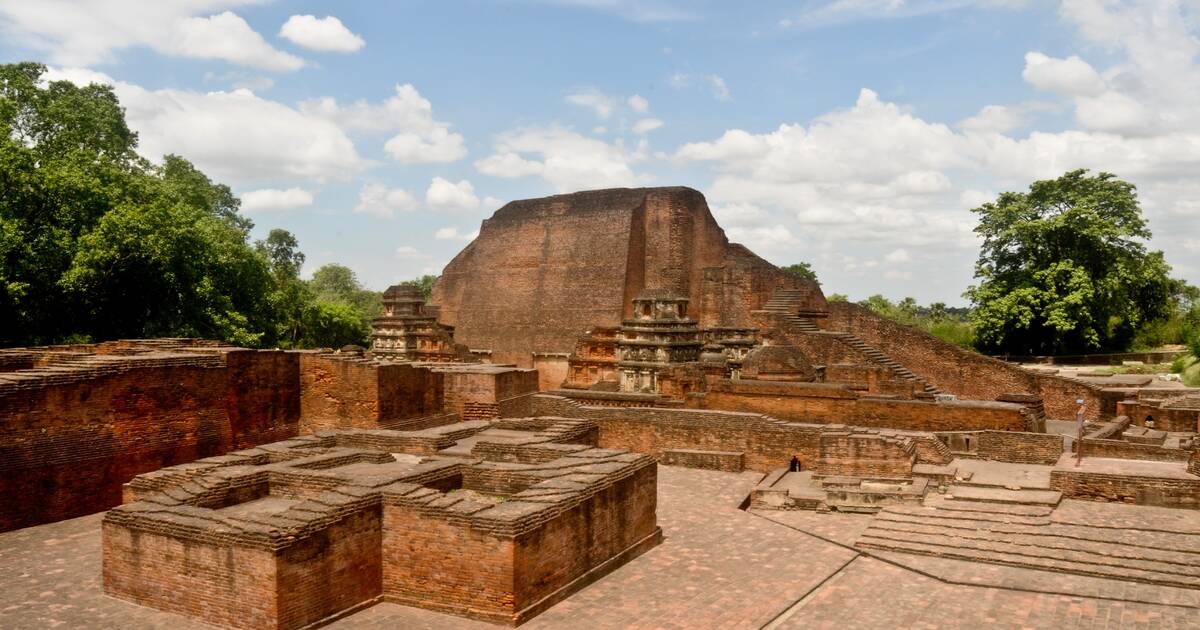At the dawn of the 5th century, the World witnessed a wonder of wisdom. A residence of learning and wisdom was built and those who desired it were given a place to dwell in.
They thrived and flourished in this genius abode throughout and came out to be the best scholars of the time. This residence of learning was none other than the Nalanda Mahavihara.
Itihaaskikhoj brings you this set of 15 interesting facts about this 1600-year-old institution which leave you dumbstruck. Hope in to dive into the sea of wisdom.
15 Interesting Facts About Nalanda Mahavihara

- Originally known as Nalanda Mahavihara, the term Mahavihara is a Sanskrit word that translates to ‘great vihara.’ Vihara which refers to Buddhist monasteries. The Vihara served as a permanent monastic complex and center of learning.
- The Nalanda University, situated in the ancient Kingdom of Magadha, was founded in the 5th century CE and was believed to be the first/oldest residential university in the World.
- Founded during the Gupta dynasty, Nalanda had the opportunity to grow under famous influences and emperors, including the great Harshvardhan and Ashoka. The university also flourished under the rule of the Pala dynasty in the 8th and 9th centuries CE, receiving international fame.
- The international fame did not only bring in the Buddhist monks, but it also attracted scholars from throughout Southeast Asia, especially from the regions of Tibet, Japan, China, Korea, Magnolia and even Sri Lanka.
- The Nalanda Mahavihara covered an area of 14 hectares, and the complex comprised of numerous buildings, including libraries, lecture halls, and meditation centers as well! The buildings were adorned with important artworks of stone and metal. A marvelous artwork of the period.
- The library at the Nalanda Mahavihara was named Dharmaganja, which translates to ‘Treasury of Truth.’ The library housed millions of manuscripts, texts and other books, making it one of the richest libraries of ancient times. It comprised of three large buildings, ‘Ratnasagara’, ‘Ratnadadhi’ and ‘Ratnaranjaka.’
- The main stupa present in the complex of the Mahavihara was known as the ‘Great Stupa’ and was surrounded by numerous small stupas. This Stupa served as the central point for all the religious activities.
- As the name suggests, Nalanda became one of the biggest Mahaviharas of its time, following and preaching Buddhism amongst the masses. The arrival of international students also made it a center of trade and allowed the smooth propagation of Buddhism in the World.
- You will be amazed to know that despite being a center of propagation for Buddhism, Nalanda also included grammar, astrology, metaphysics, logic, philosophy, and even medicine! Nalanda’s multidisciplinary service has a positive impact on the educational practices of Southeast Asia.
- Aryabhatta, the great Indian mathematician and astronomer, is believed to have headed the university in the 6th Century CE. His association with the university resulted in the advancement in learning and research in the fields of science, mathematics, and astrology. Regular research, teachings, and debates resulted in an overall development of the scholars.
- Some of the ancient Chinese texts also have mentions of Nalanda in it due to Xuanzang, a Chinese scholar who studied in Nalanda for several years. Another Chinese pilgrim, Yijing, was greatly impressed by the grandness of the Mahavihara and Buddhism. They carried Sanskrit and Pali texts back with themselves to China to propagate Buddhism.
- The fully flourished site of Nalanda was destroyed and looted by the Turkish Muslim invader Bakhtiyar Khilji in 1200 CE. The buildings were destroyed, people were killed and the library was burned, resulting in the loss of millions of precious manuscripts.
- After the invasion, the site drowned in darkness. Nalanda remained undiscovered until the early 19th. The ASI conducted research and excavation programs on the site. A total of 10 monasteries and several stupas were discovered. Remnants of the buildings indicate the fine carvings and intricate designs preferred in those times.
- UNESCO declared the site and remnants of the Nalanda Mahavihara as a World Heritage site in the year 2016, earning its popularity amongst history lovers worldwide.
- The remnants of Nalanda provide a tangible connection to the past, allowing visitors to imagine the vibrant academic and spiritual life that once thrived at Nalanda Mahavihara. The artifacts excavated are preserved in the Nalanda Museum, providing an insight into the day-to-day lives of the scholars.
CONCLUSION
The Nalanda Mahavihara was indeed an epitome of wisdom and spirituality. During its peak, it served as a premier center of learning and enlightenment. And now, after its destruction, it still remains a significant site to look into its rich history and cultural heritage.
To explore interesting facts of Indian history, please visit our website, itihaaskikhoj.in
check out our recent blog Gyanganj: The Hidden Land of Immortals.

